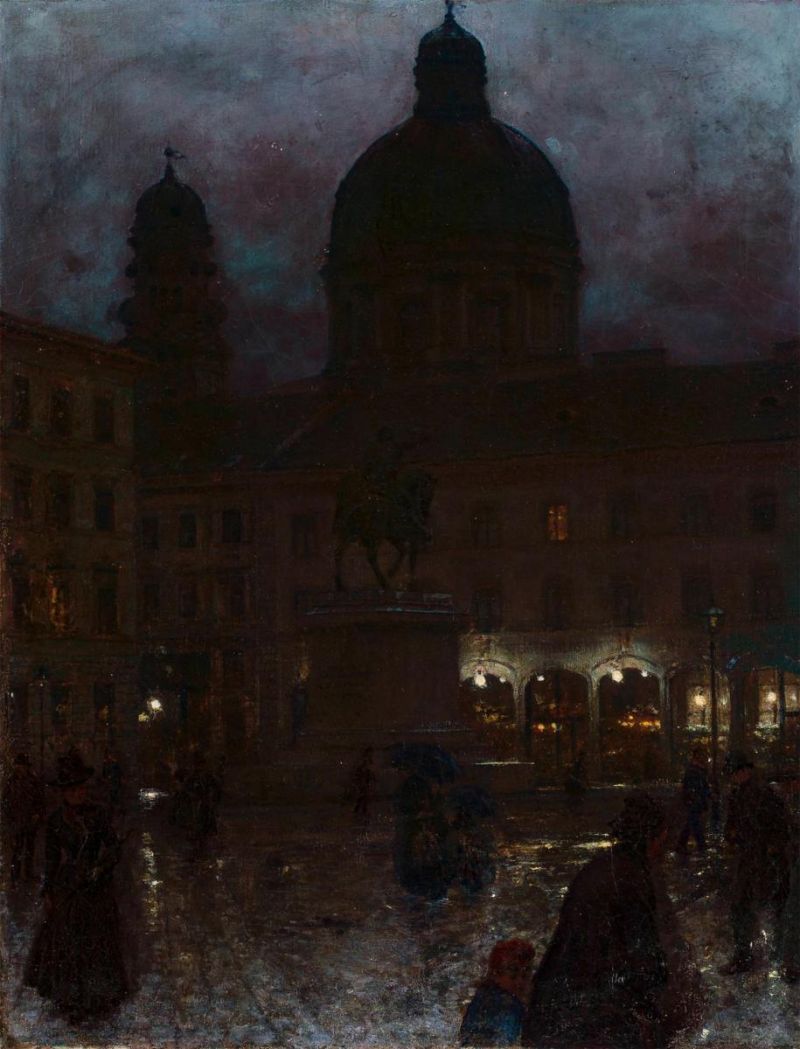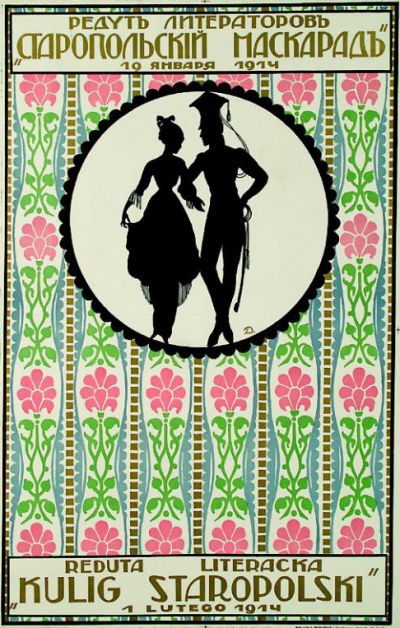Polish artists in Munich 1828–1914
Mediathek Sorted
![Abb. 1: Józef Brandt (1841-1915): Jan Karol Chodkiewicz in der Schlacht von Chocim Abb. 1: Józef Brandt (1841-1915): Jan Karol Chodkiewicz in der Schlacht von Chocim - [Jan Karol Chodkiewicz at the Battle of Chocim]. Oil on canvas, 190 × 337 cm.](/sites/default/files/styles/width_100_tiles/public/assets/images/1_brandt_1867.jpg?itok=usGlnr7h)
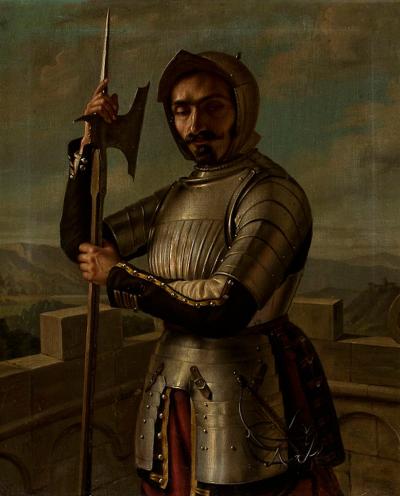
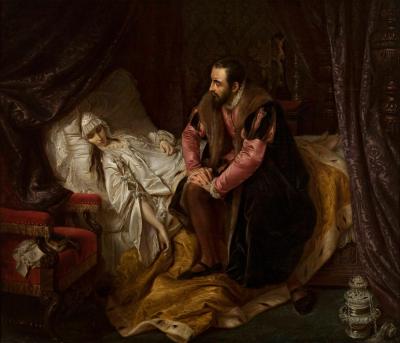
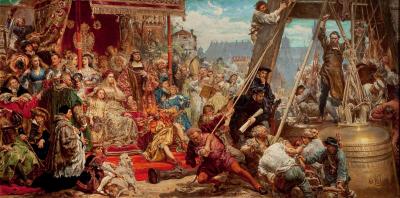
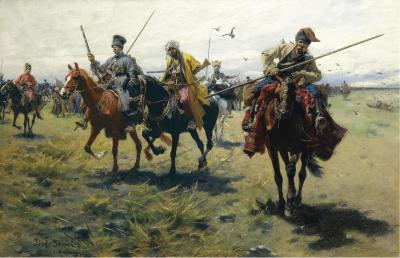

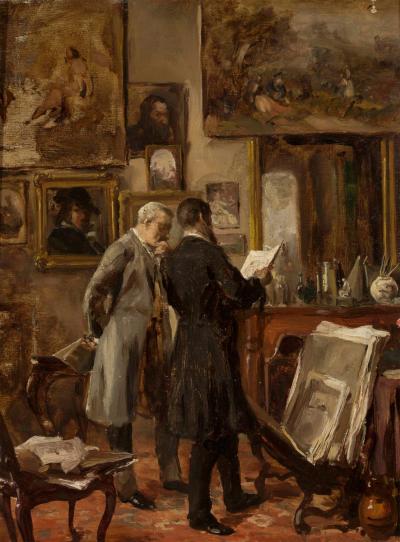
![Abb. 8: Władysław Czachórski (1850-1911): Fig. 8: Władysław Czachórski (1850-1911): Portrait of Stanisław Czachórski [the artist's brother] Abb. 8: Władysław Czachórski (1850-1911): Fig. 8: Władysław Czachórski (1850-1911): Portrait of Stanisław Czachórski [the artist's brother] - Oil on canvas, 154 x 100 cm.](/sites/default/files/styles/width_100_tiles/public/assets/images/8_czachorski.jpg?itok=_-eKPViO)
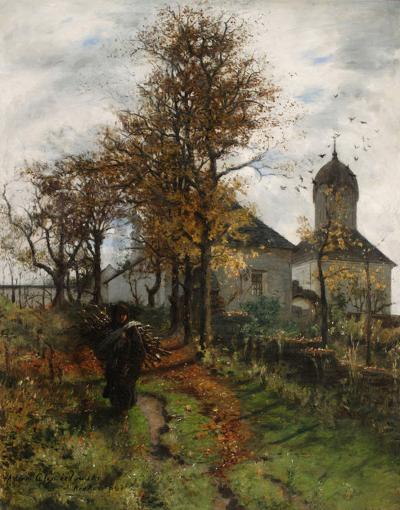
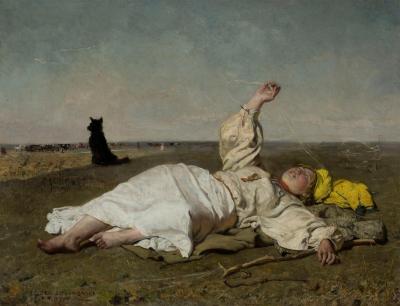




![Abb. 15: A page from ‘The Poles in Munich’ Abb. 15: A page from ‘The Poles in Munich’ - Die Polen in München [The Poles in Munich], in: Die Kunst für alle. Malerei, Plastik, Graphik, Architektur, vol. 3, München 1887/88, p. 60 f.](/sites/default/files/styles/width_100_tiles/public/assets/images/15_die_polen_in_muenchen.jpg?itok=3yKDxU_D)

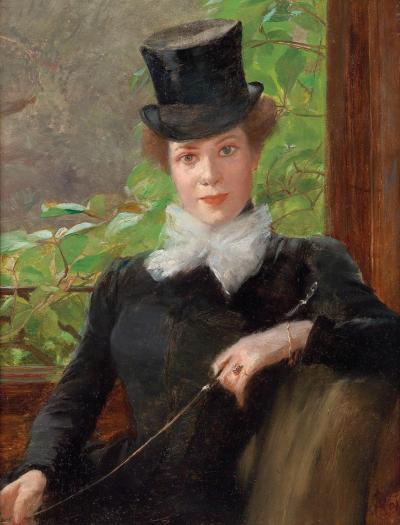
![Abb. 18: Otolia Gräfin Kraszewska (1859–1945): Die Reise ins Wunderland und zurück [The journey to Wonderland and back] Abb. 18: Otolia Gräfin Kraszewska (1859–1945): Die Reise ins Wunderland und zurück [The journey to Wonderland and back] - Münchner illustrierte Wochenschrift für Kunst und Leben 1 (1896) 24, p. 387.](/sites/default/files/styles/width_100_tiles/public/assets/images/18_kraszewska2.jpg?itok=Q3SjdX8P)

Polenkolonie in München - Hörspiel von "COSMO Radio po polsku" auf Deutsch
![Abb. 1: Józef Brandt (1841-1915): Jan Karol Chodkiewicz in der Schlacht von Chocim Abb. 1: Józef Brandt (1841-1915): Jan Karol Chodkiewicz in der Schlacht von Chocim - [Jan Karol Chodkiewicz at the Battle of Chocim]. Oil on canvas, 190 × 337 cm.](/sites/default/files/styles/width_100_tiles/public/assets/images/1_brandt_1867.jpg?itok=usGlnr7h)






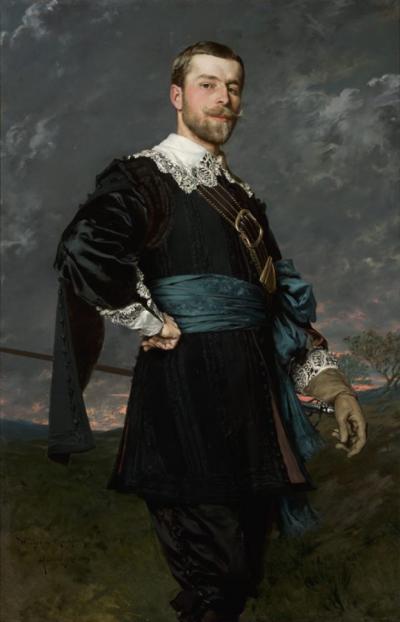






![Abb. 15: A page from ‘The Poles in Munich’ Abb. 15: A page from ‘The Poles in Munich’ - Die Polen in München [The Poles in Munich], in: Die Kunst für alle. Malerei, Plastik, Graphik, Architektur, vol. 3, München 1887/88, p. 60 f.](/sites/default/files/styles/width_100_tiles/public/assets/images/15_die_polen_in_muenchen.jpg?itok=3yKDxU_D)


![Abb. 18: Otolia Gräfin Kraszewska (1859–1945): Die Reise ins Wunderland und zurück [The journey to Wonderland and back] Abb. 18: Otolia Gräfin Kraszewska (1859–1945): Die Reise ins Wunderland und zurück [The journey to Wonderland and back] - Münchner illustrierte Wochenschrift für Kunst und Leben 1 (1896) 24, p. 387.](/sites/default/files/styles/width_100_tiles/public/assets/images/18_kraszewska2.jpg?itok=Q3SjdX8P)


Between 1870 and 1875 forty-five Polish students began their studies at the Munich Academy, some of whom became famous painters. Adam Chmielowski (1845-1916, Ill. 9), who lost a leg during the January uprising, went into exile in Ghent and Paris before beginning a course in painting in Munich in 1870. Here he took an interest in the paintings of Anselm Feuerbach and Count Schack’s art collection, as well as painting atmospheric night scenes of the city. In 1875 he moved to Warsaw where he concentrated on religious motifs and joined the Franciscan order as Brother Albert in 1887. In 1989 he was made a saint. Józef Chełmoński (1849-1914, Ill. 10), who came from an aristocratic family in Masovia, began a three year course of studies in Munich in 1872, after which he went to Paris. He was primarily influenced by French realism and painted landscapes, as well as Polish and Ukrainian hunting and genre scenes in which he portrayed village life in his homeland.
Jan Chełmiński, Wojciech Kossak and Alfred Wierusz-Kowalski joined the Academy in 1873. Chełmiński (1851-1925, Ill. 11) studied under Józef Brandt and Franz Adam. His genre and hunting pictures enjoyed great popularity amongst the higher circles of society. He sold hunting pictures to the Duke of Sachsen-Coburg and Gotha and to the Bavarian royal family, and also had successful sales and exhibitions in Berlin, Vienna, London and Paris from 1876 onwards. In 1884 he went to London and New York. Rosenberg wrote the following about Chełmiński: “He is particularly accomplished in military genres linked to a characteristic landscape. However his colouring is harder and more colourful, his characterisation less energetic and his drawing not as bold and lively as his two compatriots [Brandt and Max Gierymski].” Kossak (1856-1942, Ill. 12), who had previously studied at the Academy of Art in Krakow, lived in Munich for three years. After this he studied at the École des beaux-arts in Paris, before returning to Krakow in 1884. From 1893 onwards he worked on the “Panorama of the Battle of Racławice” in Lemberg/Lwów. In 1895 he accepted an invitation to move to Berlin from his artist colleague Julian Fałat and two years later was appointed court painter (as Adalbert Ritter von Kossak) to Kaiser Wilhelm II, on the grounds of his outstanding battle paintings He returned to Krakow in 1902. Józef Brandt’s other students also included Wierusz-Kowalski (1849-1915, Ill. 13), who made a name for himself with horse scenes, wedding processions featuring traditional Polish costumes and toboggan rides featuring young laughing people; and Julian Fałat (1853-1929, Ill. 14), who began his studies in Munich in 1875. Whereas Wierusz-Kowalski remained in Munich and was appointed an honorary professor at the Academy in 1890, Fałat travelled throughout Europe and Asia from 1885 onwards, and made the acquaintance of Prince Anton von Radziwill (the future German Kaiser Wilhelm II) during a hunting stay. In 1889 he became a court painter. In 1889 he returned to Krakow as a Professor at the Academy of Arts.
Polish artists from Munich took part in international exhibitions like the World Exhibitions in Paris and Vienna in 1867 and 1873 respectively. At the first International Exhibition of Art in the Munich Glaspalast Brandt exhibited his paintings “Fair in a small town near Krakow” and a scene from the Thirty Years War. Maksymilian Gierymski was represented with his “Spinning Room in Poland“ and the “Duel between Tarlo and Poniatowski”, an “episode from Poland’s history”. In Paris Brandt exhibited his painting “Battle near Chotin”, and in Vienna his portrait of “Sobieski near Vienna“. All in all eight Polish artists from Munich were in the German delegation at the Vienna World Exhibition. They included the Gierymski brothers. Maksymilian exhibited scenes from the January uprising that would have been banned by the censor in the Russian partition sector. These included the “Alarmed Vanguard” (Ill. 6) and “Alarm in the Insurgents’ Camp“, as well as riding scenes and genre pictures like “Cossacks” and “In front of the Tavern”.





















































































